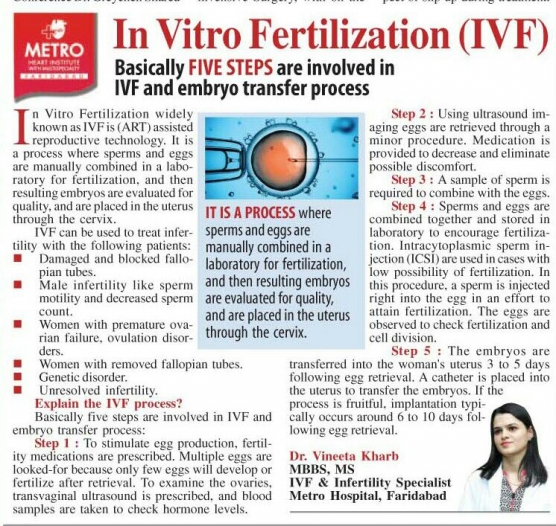
In Vitro Fertilization: IVF
In Vitro Fertilization widely known as IVF is (ART) assisted reproductive technology. It is a process where sperms and eggs are manually combined in a laboratory for fertilization, and then resulting embryos are evaluated for quality, and are placed in the uterus through the cervix.
IVF can be used to treat infertility with the following patients:
Explain the IVF process?
Basically five steps are involved in IVF and embryo transfer process:
Step 1: To stimulate egg production, fertility medications are prescribed. Multiple eggs are looked-for because only few eggs will develop or fertilize after retrieval. To examine the ovaries, transvaginal ultrasound is prescribed, and blood samples are taken to check hormone levels.
Step 2: Using ultrasound imaging eggs are retrieved through a minor procedure. Medication is provided to decrease and eliminate possible discomfort.
Step 3: A sample of sperm is required to combine with the eggs.
Step 4: Sperms and eggs are combined together and stored in laboratory to encourage fertilization. Intracytoplasmic sperm injection (ICSI) are used in cases with low possibility of fertilization. In this procedure, a sperm is injected right into the egg in an effort to attain fertilization. The eggs are observed to check fertilization and cell division.
Step 5: The embryos are transferred into the woman’s uterus 3 to 5 days following egg retrieval. A catheter is placed into the uterus to transfer the embryos. If the process is fruitful, implantation typically occurs around 6 to 10 days following egg retrieval.